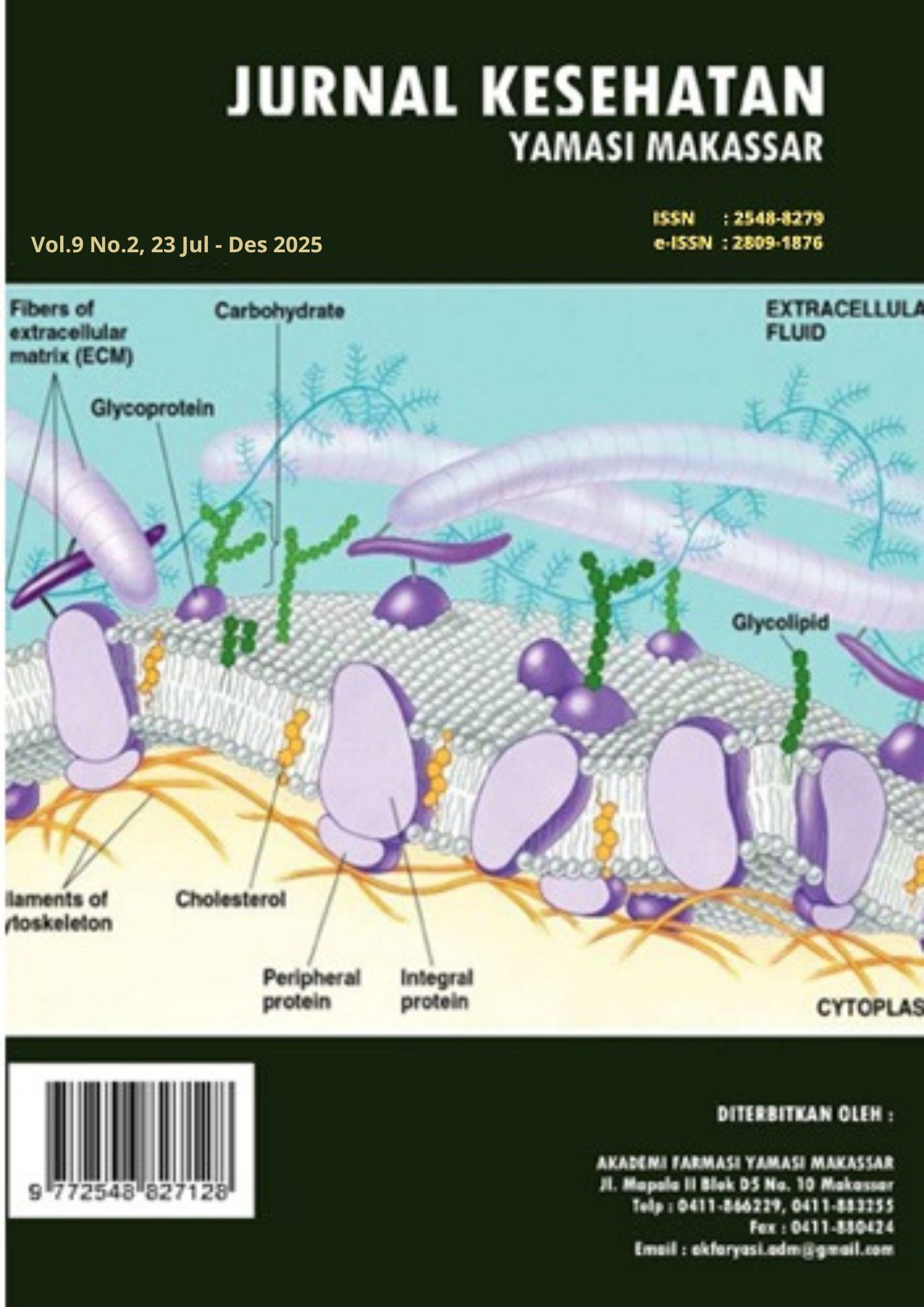UJI AKTIVITAS SABUN MANDI HERBAL ECOENZYME SEBAGAI ANTISEPTIK ALAMI TERHADAP Staphylococcus aureus DAN Propionibacterium acne
DOI:
https://doi.org/10.59060/jurkes.v9i2.393Abstract
Evaluation of the Antiseptic Activity of Herbal Bath Soap Containing Eco Enzyme Against Staphylococcus aureus and Propionibacterium acnes. Herbal bath soap is a skin cleanser formulated with a soap base and permitted additives to enhance its functionality and consumer appeal. The use of natural ingredients, particularly fruit and vegetable waste, offers a sustainable source of active compounds. Through fermentation, these materials can be converted into eco enzyme, which contains various bioactive substances with potential antibacterial properties. This study aimed to assess the antibacterial activity of herbal bath soap formulated with eco enzyme against Staphylococcus aureus and Propionibacterium acnes. The inhibition zone assay demonstrated that soap containing 25% and 50% eco enzyme exhibited average inhibition zones of 1.596 mm and 1.69 mm against P. acnes, respectively, while the negative control produced a zone of 0.88 mm. For S. aureus, the inhibition zones at the same concentrations were 3.44 mm and 1.997 mm. These findings suggest that eco enzyme-based herbal bath soap exhibits antibacterial effects against both tested bacterial strains. However, the observed inhibition remains within the weak category (<5 mm), indicating a limited but measurable antibacterial potential.
References
Das, S. et al. (2024) ‘Formulation and evaluation of herbal soap’, Journal of Pharmacognosy and Phytochemistry, 13(4), pp. 14–19. Available at: https://doi.org/10.22271/phyto.2024.v13.i4a.14990.
Dréno, B. et al. (2020) ‘The Skin Microbiome: A New Actor in Inflammatory Acne’, American Journal of Clinical Dermatology, 21(S1), pp. 18–24. Available at: https://doi.org/10.1007/s40257-020-00531-1.
Linz, M.S. et al. (2023) ‘Clinical Impact of Staphylococcus aureus Skin and Soft Tissue Infections’, Antibiotics, 12(3), p. 557. Available at: https://doi.org/10.3390/antibiotics12030557.
Liu, J.-K. (2022) ‘Natural products in cosmetics’, Natural Products and Bioprospecting, 12(1), p. 40. Available at: https://doi.org/10.1007/s13659-022-00363-y.
Mathew, R. et al. (2025) ‘Formulation and Evaluation of Herbal Soap’, International Journal of Pharmaceutical Research and Applications, 10(1), pp. 1619–1625. Available at: https://doi.org/10.35629/4494-100116191625.
Mavani, H.A.K. et al. (2020) ‘Antimicrobial Efficacy of Fruit Peels Eco-Enzyme against Enterococcus faecalis: An In Vitro Study’, International Journal of Environmental Research and Public Health, 17(14), p. 5107. Available at: https://doi.org/10.3390/ijerph17145107.
McLaughlin, J. et al. (2019) ‘Propionibacterium acnes and Acne Vulgaris: New Insights from the Integration of Population Genetic, Multi-Omic, Biochemical and Host-Microbe Studies’, Microorganisms, 7(5), p. 128. Available at: https://doi.org/10.3390/microorganisms7050128.
Murdikaningrum, G. et al. (2024) ‘Production of Transparent Solid Antibacterial Soap from Palm Oil Using Eco-Enzyme’, Sainteks: Jurnal Sain dan Teknik, 6(2), pp. 333–342. Available at: https://doi.org/10.37577/sainteks.v6i02.792.
Ningrum, R.S. et al. (2024) ‘Investigation of Eco-enzyme from Pineapple (Ananas comosus (L.) Merr.) Waste: Chemical Composition, Antibacterial Activity, and Molecular Docking Approach’, Waste and Biomass Valorization, 15(8), pp. 4793–4805. Available at: https://doi.org/10.1007/s12649-024-02492-6.
Riana Septiani and Susanti Sundari (2025) ‘Transformasi Limbah Organik Menjadi Produk Bernilai Tambah: Pengembangan Sabun Cair Ramah Lingkungan’, INSOLOGI: Jurnal Sains dan Teknologi, 4(1), pp. 89–101. Available at: https://doi.org/10.55123/insologi.v4i1.4860.













